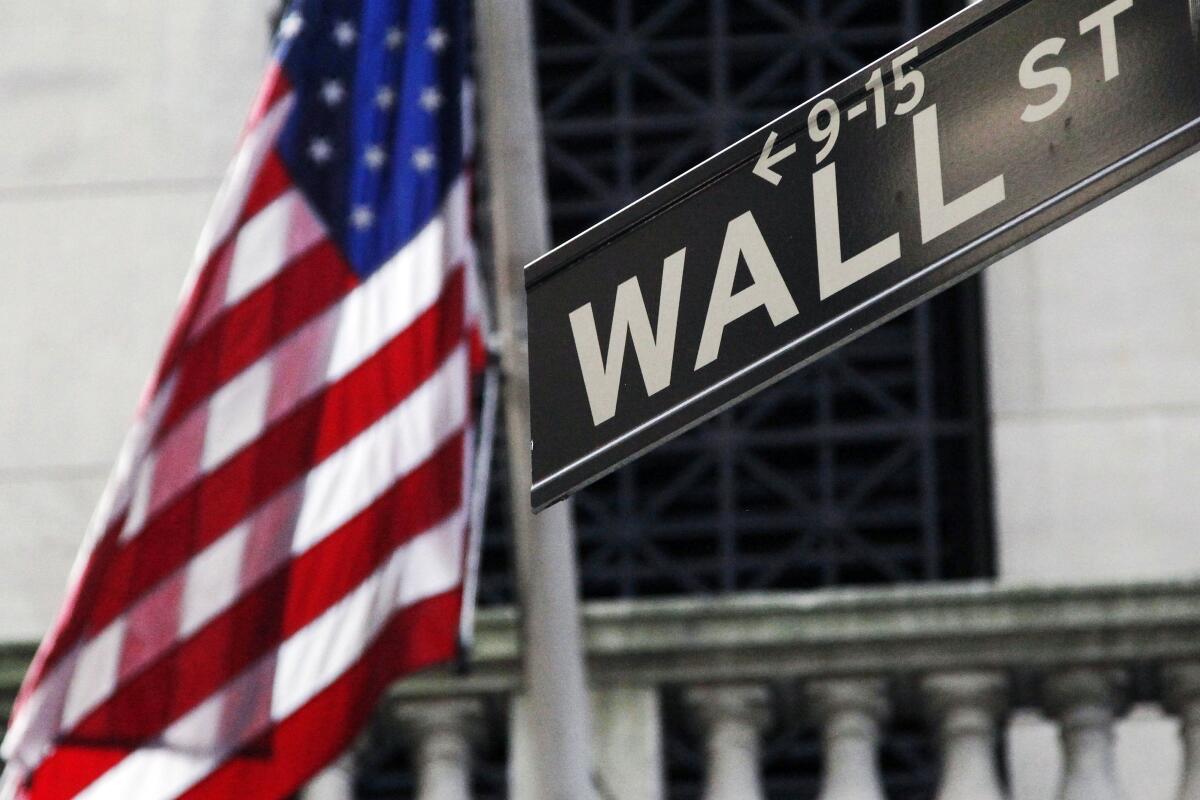Stocks fall after Kabul bombing; traders also wait for Fed

- Share via
Technology and communication companies led a broad sell-off Thursday on Wall Street after deadly attacks at the Kabul airport in Afghanistan.
The Standard & Poor’s 500 index fell 0.6% a day after capping a five-day winning streak with an all-time high. The Dow Jones industrial average fell 0.5%, while the Nasdaq composite lost 0.6%. Despite the losses, the three major indexes are on track for weekly gains.
Twin bombings struck Thursday outside Kabul’s airport, where large crowds of people trying to flee Afghanistan have massed. At least 60 Afghans and 12 U.S. troops were killed, according to Afghan and U.S. officials. Scores of other people were wounded. The airport had been the focus of NATO evacuations from the country after the Taliban took over last week.
The declines were widespread, with 10 of the 11 sectors in the S&P 500 closing lower. Technology stocks, communication services providers and a mix of companies that rely on consumer spending accounted for much of the pullback. Banks and energy stocks also weighed on the index. Only real estate stocks closed higher.
A new program involving local subsidies aims to help middle-income Californians afford better housing. Critics say it’s a bad use of public funds.
Stocks had been moving lower in early trading before the bombings, following pullbacks in markets in Asia and Europe as investors looked ahead to the Federal Reserve’s two-day conference in Jackson Hole, Wyo., which began Thursday. The selling accelerated swiftly once news of the attacks broke.
The S&P 500 fell 26.19 points to 4,470, while the Dow dropped 192.38 points to 35,213.12. The Nasdaq lost 96.05 points to close at 14,945.81. The tech-heavy index had closed above 15,000 points for the first time a day earlier.
Small-company stocks shouldered some of the heaviest selling. The Russell 2000 index slid 25.29 points, or 1.1%, to 2,213.98.
Despite the sell-off in stocks, market indicators that traditionally signal worry on Wall Street were little changed. Treasury yields were mixed, and the yield on the closely watched 10-year Treasury held steady at 1.35%. Meanwhile, the price of gold rose only 0.2%.
The VIX, a measure of nervousness among stock investors, rose 12% but remained slightly below 20, which signals market risk is low.
Before the attack, most of the market’s attention was on the Fed and on what Fed Chair Jerome H. Powell will say when he speaks at the central bank’s annual symposium Friday.
Traders are betting that Fed officials will remain in a wait-and-see mode regarding inflation, since most policymakers believe that any inflation earlier this year will be temporary and because the rise in COVID-19 cases has worried some economists.
That said, yields have steadily risen in the bond market in the last week, which could be a sign that traders are preparing for the Fed to start winding down its emergency support measures in the coming months.
Jobless claims edged up by just 4,000 to 353,000 from a pandemic low 349,000 a week earlier, the Labor Department reported Thursday. The four-week average fell by 11,500 to 366,500. That’s the lowest since mid-March 2020.
The wave of selling Thursday affected a wide swath of stocks. Microsoft fell 1% and Western Digital slid 4.5%. Dollar Tree led the decline in the S&P 500’s consumer discretionary sector, skidding 12.1%, while clothing retailer Gap dropped 4.1%. Citigroup fell 1% and Facebook gave up 1.1%.
Salesforce.com was one of the biggest gainers, rising 2.7% after the company’s quarterly results easily beat analysts’ expectations. The company also raised its full-year outlook.
More to Read
Inside the business of entertainment
The Wide Shot brings you news, analysis and insights on everything from streaming wars to production — and what it all means for the future.
You may occasionally receive promotional content from the Los Angeles Times.











